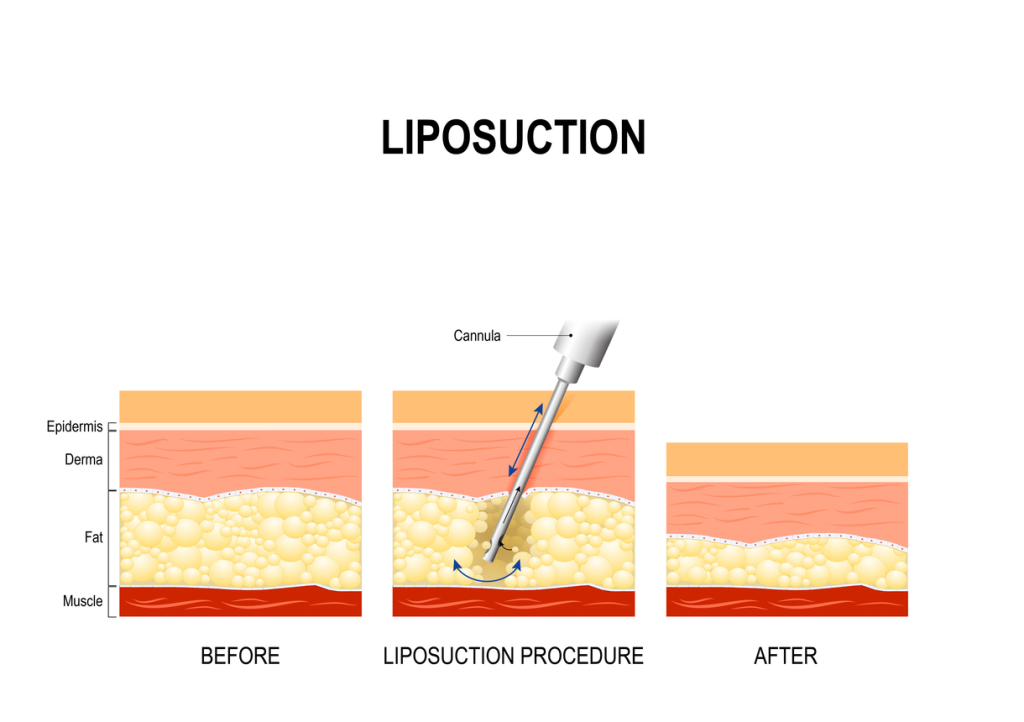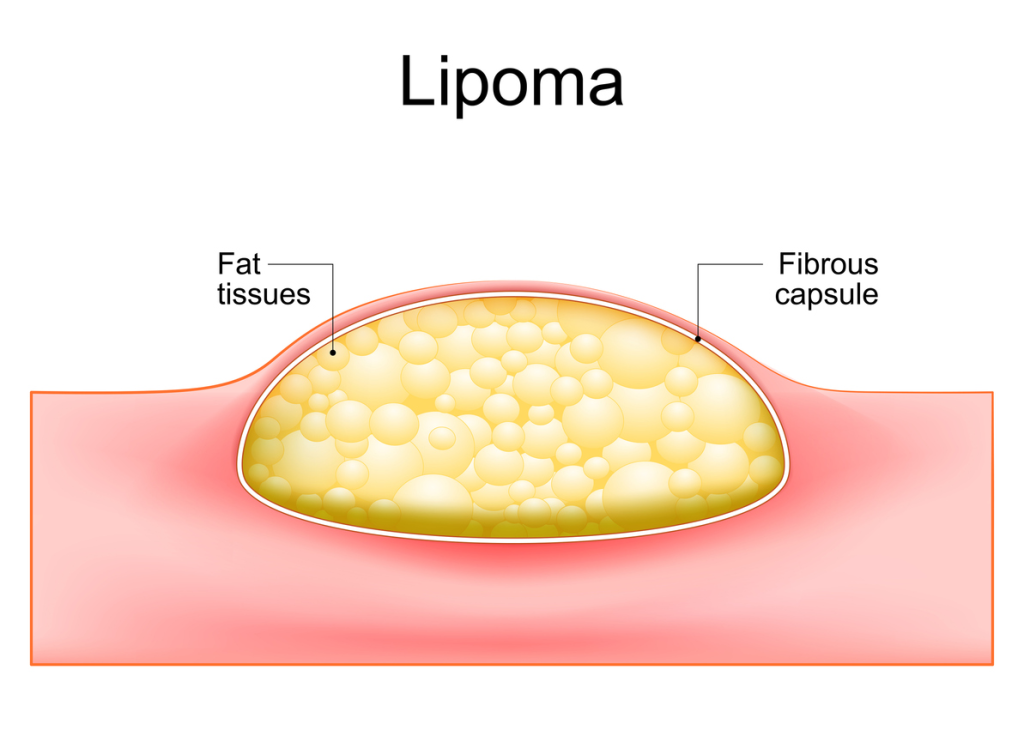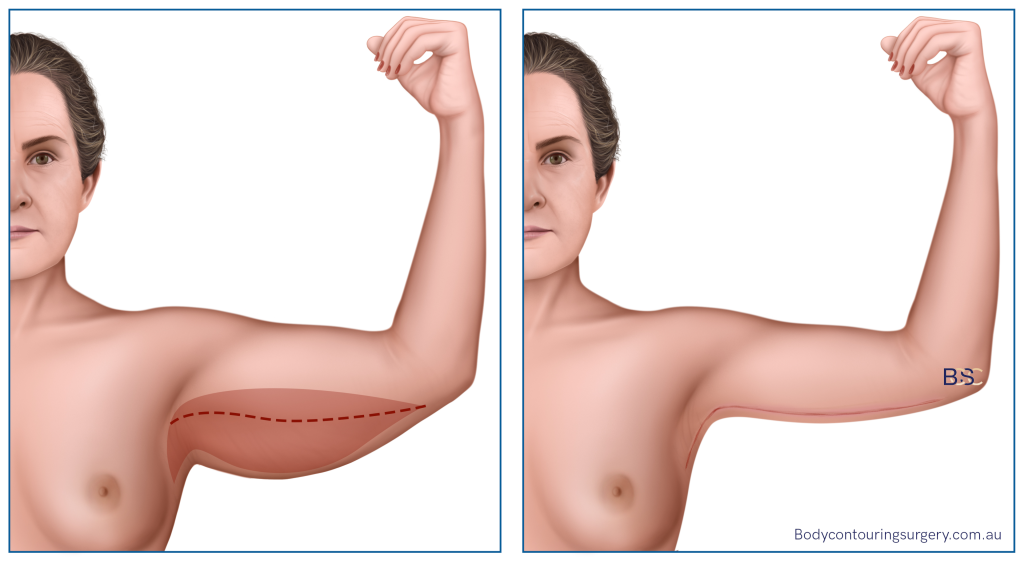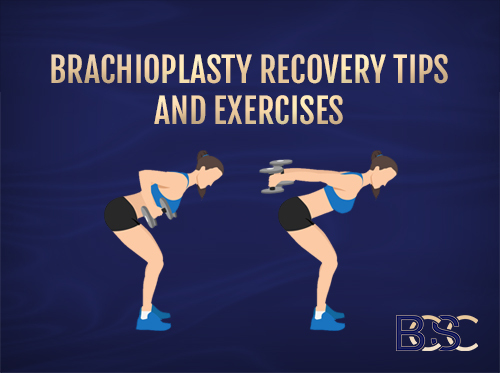Brachioplasty for Patients With Significant Arm Asymmetry
Arms are never perfectly symmetrical. This is especially true for patients that had a botched arm lift, liposuction gone wrong, or lipoma removal. Arm asymmetry can also be the result of a lipoma or massive weight loss. Arm lift surgery or revision brachioplasty can make uneven arms look more symmetrical.
The human body is naturally asymmetrical
If you divide your body in half, the two sides will never be a perfect mirror image. Most people don’t even notice these slight differences. However, sometimes one arm appears significantly bigger than the other for various reasons. Cosmetic procedures are available to ** asymmetrical arms.
Six Causes of Uneven Arms
1. Botched arm lift surgery
Arm lift surgery removes excess upper arm skin and fat. Surgeons must be careful to remove a similar amount of skin from each side to get a good result. If they remove too much skin from one side, the patient will end up with arms that look asymmetrical. The exception to this is when the patient has more drooping skin on one arm to begin with. In this case, the surgeon must remove additional excess skin from the ** arm. In either case, a revision arm lift procedure may be needed to fine-tune the results of the first surgery.
2. Liposuction gone wrong

Liposuction removes excess fat deposits from the upper arms. To ensure a balanced, symmetrical result, surgeons need to remove a similar amount of fat from each side. Failing to do so can cause one arm to look bulkier than the other. Of course, if the patient naturally stores more excess fat in one arm, the surgeon must remove more fat from the bigger arm to ensure a comparable result. This can be tricky to get right if the surgeon is inexperienced in liposuction. A secondary liposuction procedure may be necessary to fine-tune the initial surgical results if the asymmetry is noticeable.
3. Lipoma

A lipoma is a lump of fat tissue that forms just under the skin. A large lipoma on the upper arm will cause the arms to appear noticeably asymmetrical.
4. Lipoma removal
While not cancerous, many people elect to have the lipoma removed if it is excessively large or causing irritation. Lipoma removal is often done with liposuction. However, overly aggressive liposuction could remove too much fatty tissue, causing the arms to appear asymmetrical. A skilled surgeon may be able to even out the result by performing a secondary liposuction procedure.
5. Massive weight loss
Significant weight loss is considered losing 20 percent or more of the patient’s starting weight. Often, this is achieved through bariatric surgery or extreme diet and exercise. While losing weight can make a person slimmer and **, ** skin and resistant fat pockets may be left behind, especially in patients with poor skin elasticity. The remaining skin and fat are not always evenly distributed, which means one arm could end up with more loose skin and excess fat. Arm lift surgery can remove excess skin and fat from the upper arm, even if one arm is naturally bigger than the other.
6. Lifestyle factors

A 2021 study of 165 middle-aged and elderly people found that subjects who led physically active lifestyles had more symmetrical bodies than those who led sedentary lifestyles. The researchers concluded that participating in sports like tennis and running could be beneficial. (Ref 1) Another study found that bodybuilders and jiu-jitsu competitors tend to have good body symmetry. (Ref 2)
Yet exercise could be a potential cause of uneven arm muscles. If a person favors one arm when they lift weights, they will develop more muscle mass in that arm, causing an imbalanced appearance. A surgical procedure like an arm lift isn’t necessary if the problem is muscle asymmetry. Instead, the patient should focus on building muscle on the weaker side by modifying their gym routine.
** Symmetry with Brachioplasty, Revision Brachioplasty, or Liposuction
If you have more excess skin and fat on one arm after weight loss or a past surgical procedure, speak to our surgeons to learn if you are a candidate for arm lift surgery, liposuction, or a combined procedure known as VASER-assisted arm lift surgery. Our surgeons are skilled in both primary arm lifts and revision arm lifts.
FAQs
Is asymmetry normal after arm lift surgery?
Patients must have realistic expectations and understand that perfect symmetry is virtually impossible. However, the arms should look comparable after arm lift surgery. A skilled surgeon will remove more excess skin and fat from the bigger arm if necessary so the arms looks balanced and proportional after the operation.
Keep in mind it can take several months to a year for the swelling to resolve after an arm lift procedure. The swelling may be more prominent on one side. Therefore, patients should wait at least 12 months to judge their final arm lift results. If the arms are noticeably asymmetrical after the procedure, a revision arm lift surgery may be needed to correct it.
Who is a good candidate for brachioplasty?
Ideal candidates for upper arm lift surgery are ** non-smokers who are not significantly overweight, pregnant, or breastfeeding. Post-bariatric patients considering arm reduction surgery to remove excess skin and fat must maintain a stable weight for at least six months beforehand.
What is hidden arm lift limited incision brachioplasty?

This surgical technique is also known as a short-scar arm lift or minimal incision brachioplasty. The incision is placed in the armpit, meaning less visible scarring than a traditional arm lift. While the scar location is more discreet and recovery times are usually **, short-scar surgical techniques won’t remove as much excess skin and fat as traditional arm lift surgery.
What can go wrong with brachioplasty (arm lift surgery)?

Arm lift surgery promises smoother arms and tighter skin. However, body contouring always comes with possible risks. If you are considering arm lift surgery, you will need to carefully weigh the risks and benefits involved.
Asymmetry, infection, poor wound healing, allergic reactions, fluid accumulation in the underlying tissues, prolonged numbness, bunching of the suture line, and irregular scarring are potential complications of upper arm contouring. Major complications are rare, but may include blood clots, excessive bleeding, nerve damage, or pulmonary embolism.
General anesthesia also carries risks, especially in patients with pre-existing health issues. Lifestyle factors like smoking can also make arm lift surgery more risky than it needs to be.
For these reasons, patient selection is the most important part of the initial consultation. Your surgeon will ask about your medical history and lifestyle habits to ensure you are a qualified candidate. Essentially, you’ll need to be in good physical health to be considered for arm lift surgery. If you have ailments like diabetes or cardiovascular problems, you might not be a good fit for aesthetic surgery.
To lower the risks involved, follow your surgeon’s advice carefully to ensure proper healing. For example, you’ll need to avoid heavy lifting, and limit physical exertion for three to six weeks after an arm lift procedure as well as refrain from smoking. You should also wear your compression garments as directed. This will reduce swelling and help the tissues adhere together during the healing process. Finally, the sterile dressings should be kept clean to decrease the chance of infection.
Is there an alternative to brachioplasty?
Non-surgical skin tightening and non-surgical fat reduction procedures are available to patients with mild-to-moderate excess skin and fat in the upper arms. If you have achieved significant weight loss or have severe skin laxity due to ageing, surgery is generally the preferred option.
Can obese patients undergo brachioplasty?
A severely overweight patient is not a good candidate for arm lift surgery. They are more likely to have health issues that can lead to complications from general anesthesia. Additionally, arm lift surgery is primarily an excess skin removal procedure. While some subcutaneous fat is removed from the upper arm, there is a limit to how much fat can be removed. That said, arm lift surgery can be a great option for patients with ** skin and excess fat deposits after massive weight loss, so long as they have maintained a stable weight for six months before the surgical procedure.
References
- Stagi, Silvia, et al. “Body Composition Symmetry in Long-Term Active Middle-Aged and Older Individuals.” International Journal of Environmental Research and Public Health, vol. 18, no. 11, Multidisciplinary Digital Publishing Institute, June 2021, p. 5956.
- Burdukiewicz, Anna, et al. “Asymmetry of Musculature and Hand Grip Strength in Bodybuilders and Martial Artists.” International Journal of Environmental Research and Public Health, vol. 17, no. 13, Multidisciplinary Digital Publishing Institute, June 2020, p. 4695.



